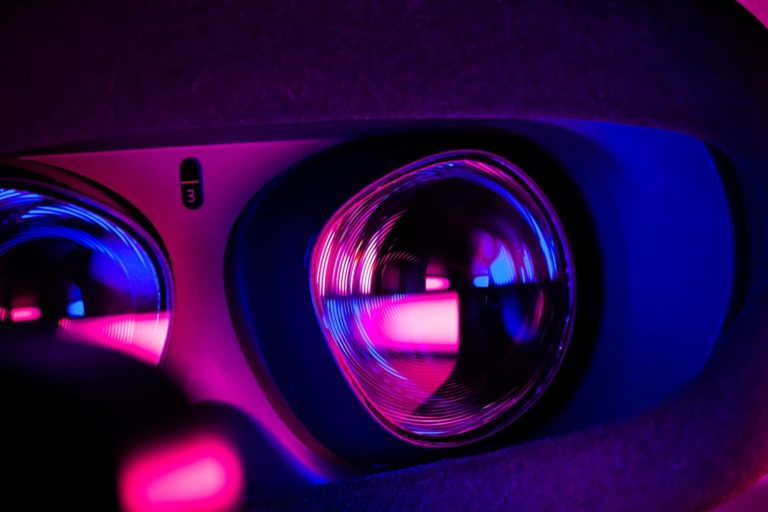
Virtual reality (VR) may have started as a tool to immerse gamers in elaborate fictional environments, but these headsets have evolved into invaluable tools for many industries. One of the most consequential is healthcare. How are patients benefiting from VR? Here are just six ways.
1. Pain Relief
A VR roller coaster or combat scenario can be exciting, but that isn’t the only application for these virtual environments.
Researchers are exploring ways to use VR headsets as a tool for pain management for patients living with chronic pain flare-ups. Pairing calming immersive environments with guided narration or meditation can help caregivers walk patients through breathing exercises or teach them new skills to redirect their negative thoughts about their pain. Most of the studies surrounding VR for pain relief are focused on sudden and acute pain, such as that experienced by patients undergoing burn treatments, but the results are promising. Focusing more on tools like virtual reality for pain relief could also reduce reliance on addictive opioid pain relievers.
2. Psychology and Therapy
A virtual reality system can immerse patients into nearly any environment imaginable. What about the memories that caused trauma? In a controlled and monitored environment, psychologists can use VR to help patients who have PTSD relive their trauma and overcome it.
Researchers have studied VR’s potential as a therapy tool for treating anxiety since the 1990s. The technology available now is exponentially better than what we had access to in the ‘90s, though. The headsets used to help treat 9/11 survivors cost upwards of $25,000 each, but you can bring home a basic headset for less than $300 today.
3. Medical Anxiety Relief
Speaking of anxiety, studies show that upwards of 20 percent of American adults avoid dental care due to anxiety about the procedures. Instead of relying on anesthesia – which can be expensive and dangerous – immersing patients in a virtual world while they undergo dental procedures can reduce that anxiety.
Medical professionals can apply the same technology to procedures that might inspire severe anxiety outside of dentistry. In addition to relieving that discomfort, keeping the patient unmedicated can result in a better outcome, as they are better able to communicate with their doctors and nurses. This keeps patients more engaged and reduces overall anxiety.
4. Neurorehabilitation
Rehabilitation after a neurological event can be challenging. For example, patients who have suffered from strokes spend long periods relearning basic tasks like walking. Virtual reality can speed up recovery times by pairing a VR headset with robotic devices that strap to the patient’s arms and legs. One example of these wearable devices, named Motus, assists patients through their rehabilitation.
In addition to guiding patients through calming virtual environments, Motus can collect essential information – such as how much force the patient can generate with each limb – to allow physical therapists to customize their recovery plans better.
5. Telemedicine
Telemedicine as an industry has grown exponentially since 2020. The COVID-19 pandemic swept the globe, but people still needed medical care. Telemedicine isn’t the perfect solution, but it enables people to speak to their doctors without coming into the office. Incorporating virtual reality technology into telemedicine is the next logical step.
In 2020, clinics in eight states and the District of Columbia started offering VR treatments, enabling patients to get the feeling of sitting in the office and talking to their physicians without ever leaving their homes. These treatments will likely continue to grow and expand in the coming years. Even if people aren’t worried about the pandemic as much as they were in 2020, the need for telemedicine won’t go away anytime soon.
6. Quality of Life
Spending days, weeks, or even longer staring at the four walls of a hospital room can make it difficult to maintain patient morale. VR gives patients the tools to explore the world without ever leaving their beds. For some patients – especially children undergoing extended treatment – certain services will make a virtual scan of their home. That way, they have all the comforts of home in their virtual space.
This VR application can help improve a patient’s quality of life and morale while spending extended periods in the hospital or other inpatient facilities.
Just the Beginning
We’ve barely scratched the surface when it comes to VR for patients. These technologies also appear in medical schools, improving physician and surgeon training. When paired with 5G technology, surgeons can complete procedures from hundreds or thousands of miles away. The possibilities are practically endless. Incorporating VR further into medicine is the next logical step for the technology.
 Devin Partida is Editor-in-Chief at ReHack Magazine and editorial contributor at AR Insider. See her work here and follow her @rehackmagazine.
Devin Partida is Editor-in-Chief at ReHack Magazine and editorial contributor at AR Insider. See her work here and follow her @rehackmagazine.

